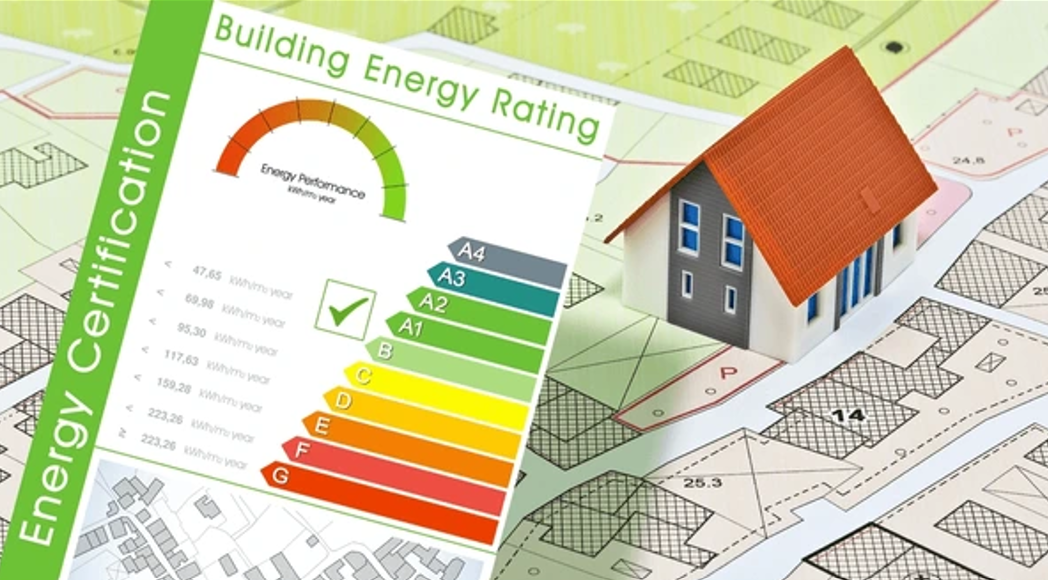Navigating the New EPC Regulations: A Guide for Commercial Property Owners and Developers

As the UK moves towards its net-zero carbon target by 2050, the government is tightening the rules around energy performance in commercial properties. Energy Performance Certificates (EPCs) are at the heart of these changes, and landlords, commercial property developers, and tenants need to stay ahead of the curve to ensure they are compliant and avoid potential penalties.
At Harlaxton Estates, we understand how crucial it is to stay informed about these regulations. In this blog post, we will break down the key upcoming changes to EPC legislation, how they might affect commercial property owners, and how Harlaxton Estates can assist in navigating these changes.
What Are EPCs and Why Do They Matter?
An Energy Performance Certificate (EPC) is a rating system that measures the energy efficiency of a building. It’s an essential tool for both landlords and tenants, as it helps them understand how much energy a property uses, its carbon footprint, and its overall environmental impact. The EPC rating is crucial when it comes to leasing or selling a property, and it provides tenants with information that can affect their energy bills.
The scale ranges from A (most efficient) to G (least efficient). Commercial properties, depending on their use, will be required to meet specific EPC standards for new leases, with stricter regulations on the horizon for all properties.
Key Changes to EPC Legislation
The UK government is implementing a series of changes to EPC regulations that will have a significant impact on the commercial property sector. Below are the key changes and their potential implications for property owners and developers:
1. Minimum Energy Efficiency Standards (MEES) Tightening
What’s changing: From April 2023, it is now a legal requirement for all newly rented or renewed commercial leases to have an EPC rating of at least E. By April 2027, the government plans to raise this minimum requirement to C for all commercial properties.
Impact: This will require many property owners to make substantial upgrades to their buildings to improve energy efficiency. Non-compliant buildings may not be legally lettable, potentially leading to higher vacancy rates or reduced income.
Forecasted costs:
The cost to improve a commercial property’s EPC rating could range from £10,000 to £100,000+ depending on the building’s size, condition, and current energy performance. This could include the installation of energy-efficient heating systems, improved insulation, new windows, or advanced HVAC systems.
2. Mandatory EPC Upgrades for Existing Properties
What’s changing: The government has indicated that, by 2030, all commercial properties must meet a minimum EPC rating of C, regardless of whether they are undergoing leasing changes.
Impact: This will likely mean large-scale retrofitting across the commercial property sector, with developers and landlords needing to invest in energy efficiency upgrades. Buildings that don’t meet the required standard will be less attractive to tenants and could face reduced market value.
3. Stricter Enforcement and Penalties for Non-Compliance
What’s changing: The penalties for failing to comply with EPC regulations are expected to become more stringent. Non-compliant properties may face fines of up to £150,000 per property.
Impact: Landlords who fail to upgrade their properties to meet the minimum EPC rating will face financial penalties. Additionally, tenants may be reluctant to lease properties with poor energy efficiency ratings due to the higher operational costs associated with inefficient buildings.
Forecasted costs: In addition to the fines, landlords could see a significant decrease in demand for poorly rated properties, potentially reducing rental income.
4. Increased Reporting Requirements for Energy Efficiency
What’s changing: Landlords will be required to submit detailed reports on the energy efficiency of their properties as part of their compliance with the MEES regulations.
Impact: This will increase administrative overhead for property owners and developers, as they will need to keep detailed records and demonstrate their compliance with the regulations.
5. Incentives for Energy Efficiency Improvements
What’s changing: While regulations tighten, there will be government incentives available for property owners who invest in energy efficiency. These might include grants, tax breaks, or low-interest loans.
Impact: For landlords and developers willing to invest in improving energy efficiency, there will be financial support to help mitigate costs. These incentives could help accelerate the adoption of energy-saving technologies and improve the EPC ratings of commercial properties.
Conclusion
The upcoming changes to EPC regulations present both challenges and opportunities for commercial property owners and developers. While the costs of meeting the new standards can be significant, the long-term benefits, including lower operating costs and increased tenant demand, make these investments worthwhile.
At Harlaxton Estates, we are committed to helping our clients navigate these regulatory changes and ensure our properties remain competitive, sustainable, and compliant.
If you're unsure about how the new EPC regulations might impact your commercial properties, or if you need advice on energy efficiency improvements, don't hesitate to reach out to our team for guidance. We’re here to help you stay ahead of the curve.
Spotlight on Steve - Harlaxton Estates Managing Director
As these changes to EPC regulations unfold, it’s important for commercial property owners and developers to get expert insights into how best to navigate the landscape.
Here are five questions with Steve’s perspective on these important developments:




